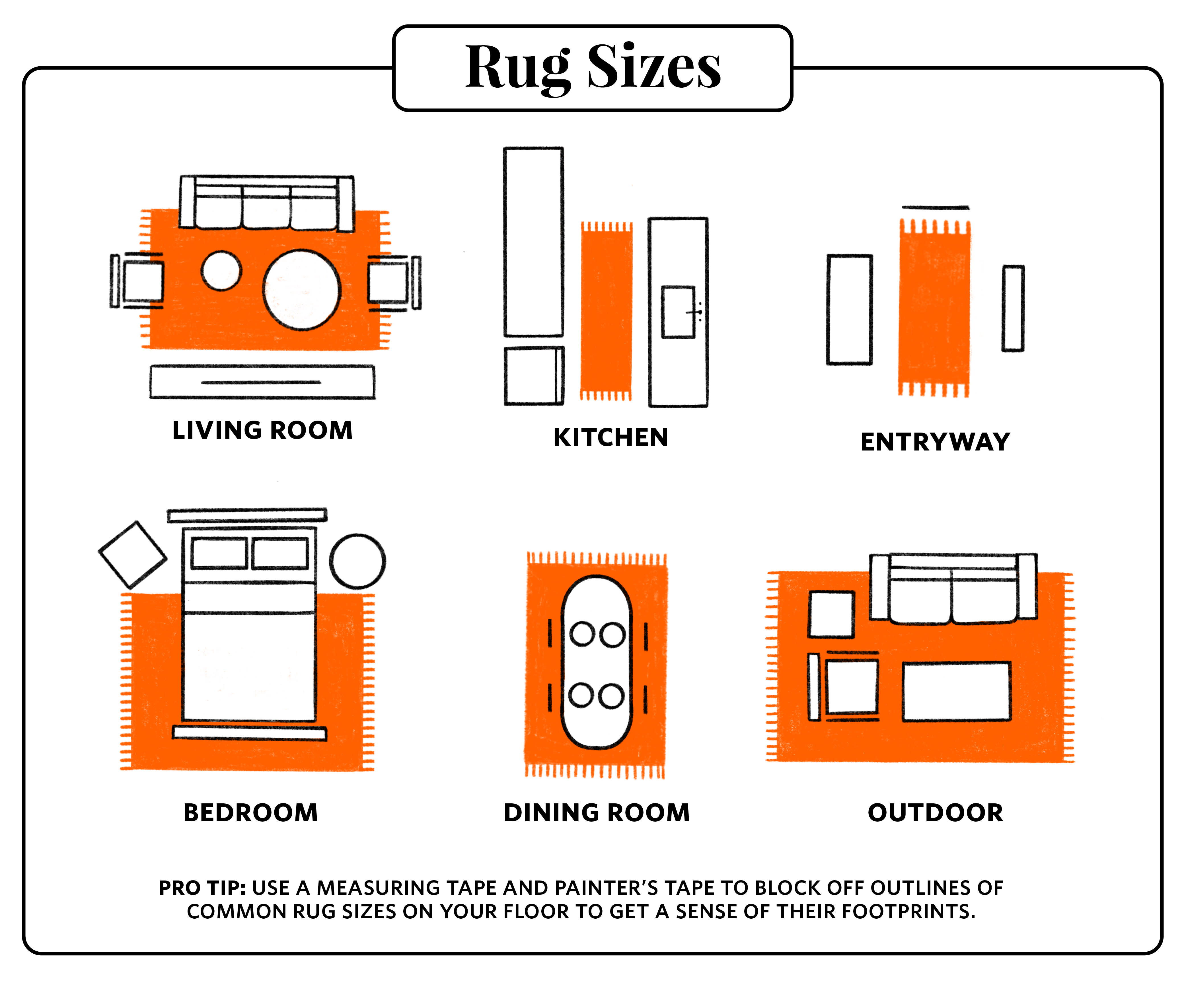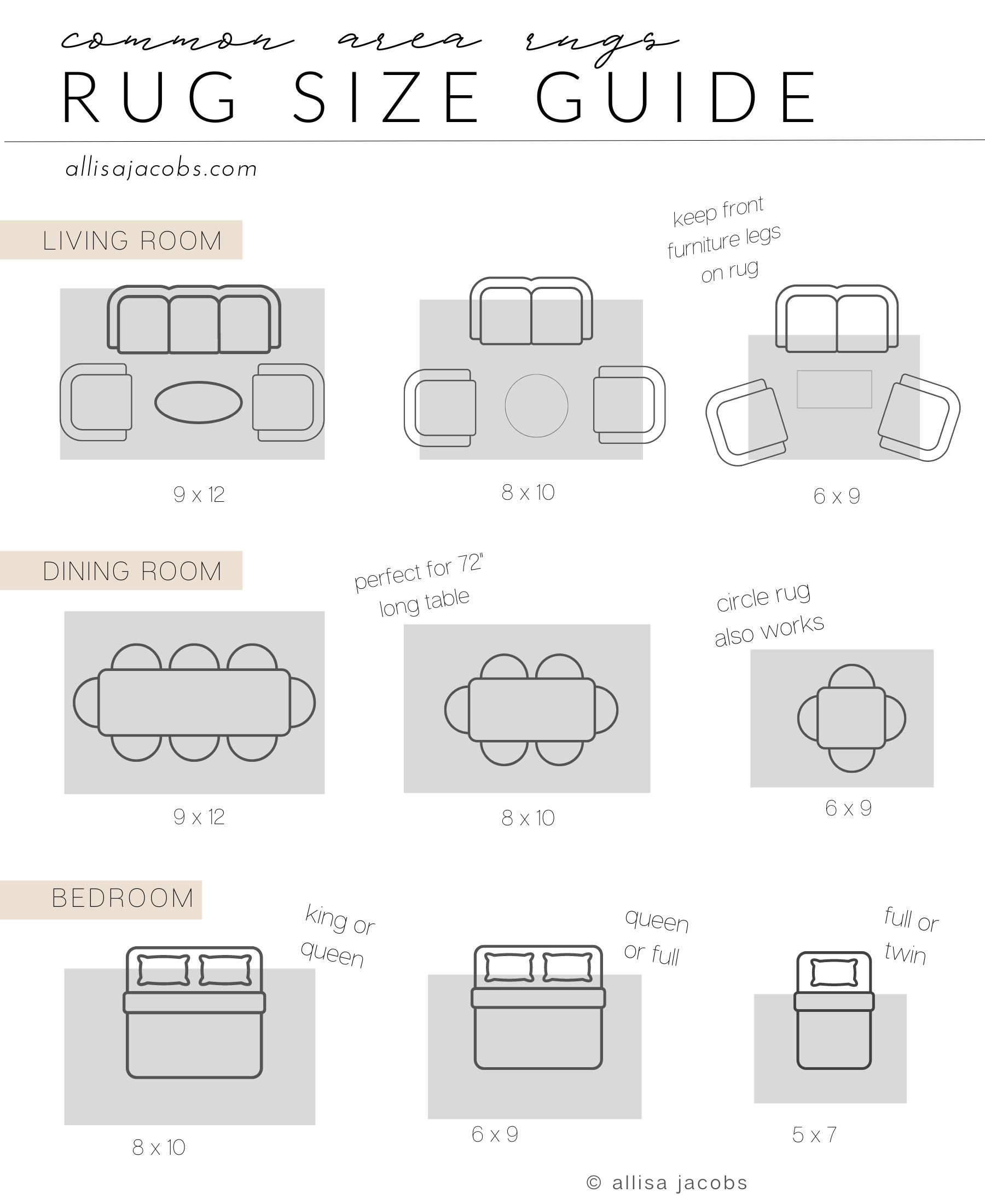To measure for a hallway runner, measure the width and length of the space and choose a runner that is slightly smaller than the measurements. Introducing a hallway runner into your space can add style and functionality to your hallway, creating a warm and inviting atmosphere. How To Measure For a Hallway Runner, let’s explore.
But before you go shopping for a runner, it’s important to get the right measurements to ensure a perfect fit. In this guide, we will walk you through the steps to accurately measure for a hallway runner. By carefully measuring the width and length of the space and selecting a runner that is slightly smaller than the measurements, you can find a runner that fits seamlessly, enhancing the beauty and functionality of your hallway.
So let’s dive in and find out how to measure for a hallway runner!

Credit: www.apartmenttherapy.com
Importance Of Accurate Measurement
Accurate measurement is crucial when selecting a hallway runner. Knowing the correct dimensions of your hallway will help you in finding a runner that fits perfectly and complements the space. With improper measurements, you risk purchasing a runner that is either too short or too long, disrupting the aesthetic balance of the area. Additionally, precise measurements also aid in avoiding tripping hazards, ensuring the runner sits flat and secure on the floor.
Measuring Hallway Length
To determine the length of the hallway runner required, measure from one end of the hallway to the other in a straight line. Ensure to start at the very beginning and end at the final point, accounting for any transitions or doorways. Accurate measurement of the length will prevent the runner from being too short or excessively long.
Measuring Hallway Width
The width measurement is just as important. Use a tape measure to find the widest part of the hallway and note down the dimension. This measurement will dictate the width of the runner needed, ensuring full floor coverage.
Choosing The Right Size Hallway Runner
When it comes to selecting a hallway runner for your space, choosing the right size is crucial. A well-fitted runner not only enhances the aesthetics of your hallway but also serves the purpose of protecting your floor from heavy foot traffic. Here are some essential factors to consider when determining the perfect size for your hallway runner.
Consider The Hallway Length
Measuring the length of your hallway is the first step towards finding the ideal runner. Start by measuring from one end of the hallway to the other, taking into account any corners or turns along the way. A common mistake is choosing a runner that is too short, leaving bare patches along the floor. To avoid this, make sure to add a few extra inches to each end of your hallway’s measurement. This will ensure that your runner extends fully and elegantly throughout your hallway, providing a cohesive look.
Consider The Hallway Width
While length is important, it is equally essential to measure the width of your hallway accurately. A runner that is too wide can make your hallway feel cramped and cluttered, while one that is too narrow may not provide enough coverage. To find the right width, measure the widest part of your hallway and subtract a few inches for a balanced and visually appealing fit. This will allow for easy maneuverability and ensure that your runner stays securely in place.
Consider The Hallway Traffic
The amount of foot traffic your hallway receives should also influence your choice of a runner size. If your hallway is a high-traffic area, it’s best to opt for a wider runner. This will help to reduce wear and tear on your floor by providing additional protection. Additionally, a wider runner gives more space for people to walk on, avoiding any potential tripping hazards. For low-traffic hallways, you may be able to choose a narrower runner, focusing more on the aesthetic value and complementing your existing decor.
By considering the length, width, and traffic of your hallway, you can select the perfect size runner to enhance both the functionality and design of your space. Remember to measure accurately and allow for some extra inches to ensure a seamless fit that adds charm and character to your hallway.
Tools And Equipment Needed
Before you start measuring for a hallway runner, it’s important to have the right tools and equipment on hand. Having these items ready will ensure an accurate and efficient measuring process. Here are the essential tools you will need:
Measuring Tape
To accurately measure the length of your hallway and determine the size of the runner you need, a measuring tape is an essential tool. A measuring tape allows you to quickly and easily measure the distance between two points, like the length of your hallway. Make sure your measuring tape is sturdy and long enough to measure the entire desired length of the runner.
Pencil Or Marker
Having a pencil or marker is crucial for marking down the measurements as you go. As you measure your hallway, make sure to mark the starting and ending points with a pencil or marker. This will help you keep track of the measurements and ensure accuracy when determining the size of the runner.
Notebook Or Paper
Keeping a notebook or a piece of paper handy is essential for jotting down the measurements. As you measure the length of your hallway, write down the measurements in your notebook or on a piece of paper. This will help you remember the measurements when it’s time to choose the right size runner for your hallway.

Credit: froy.com
Step-by-step Guide To Measure Hallway For A Runner
Looking to measure your hallway for a runner? Our step-by-step guide has got you covered! With simple instructions and helpful tips, you’ll be able to accurately measure your hallway and find the perfect runner to enhance your space. Get started today!
Clear The Hallway
First, clear the hallway of any obstructions or furniture to get an accurate measurement.
Start Measuring The Length
To measure the length, use a tape measure to determine the distance from one end of the hallway to the other.
Measure The Width
Next, measure the width of the hallway from wall to wall, ensuring you get an accurate figure.
Take Accurate Measurements
Ensure the measurements are accurate by double-checking with a different tape measure or measuring tool if necessary.
Double-check The Measurements
Before finalizing the measurements, double-check them to avoid any errors in the sizing of the runner.
Now, you can confidently answer questions like “How do I know what size runner to get for my hallway?” and “How long should a runner be down a hallway?”. Using this step-by-step guide, you can easily obtain accurate measurements and have an understanding of “What is the average size of a hallway runner?” or “How do you measure a runner?”.
Additional Tips And Considerations
Ensure accurate measurements by measuring the hallway’s width and length. Consider the height of any furniture along the path. Take into account the space around the runner for a proper fit and a visually appealing layout.
When it comes to measuring for a hallway runner, there are a few additional tips and considerations to keep in mind. These will ensure that you get the perfect fit for your space. Let’s take a look at three important factors to factor in: sloping floors, doorways and staircases, and visual aesthetics.
Account For Sloping Floors
One important consideration when measuring for a hallway runner is to account for sloping floors. In older houses, it’s common for the floors to be slightly uneven, which can affect the placement of your runner. To determine the correct size, measure the length of the hallway at its widest point and subtract about 3 inches to allow for any sloping or irregularities in the floor. This will ensure that your runner sits flat and avoids any tripping hazards.
Factor In Doorways And Staircases
Doorways and staircases are another factor to consider when measuring for a hallway runner. If your hallway has one or more doorways or leads to a staircase, you’ll need to factor this in when determining the length of the runner. Measure the total length of the hallway, including any doorways or staircases, and add a few extra inches to allow the runner to extend slightly beyond these areas. This will create a cohesive look and prevent the runner from appearing too short or awkwardly placed.
Consider Visual Aesthetics
In addition to practical considerations, it’s also important to consider the visual aesthetics of your hallway runner. The size and placement of the runner can have a significant impact on the overall look and feel of your space. To create a balanced and visually pleasing design, consider the width of your hallway and the scale of other elements, such as furniture or artwork. As a general guideline, your runner should be approximately 4-6 inches narrower than the width of your hallway. This will allow for a frame-like effect and provide enough space for the runner to be comfortably positioned. In conclusion, when measuring for a hallway runner, it’s important to account for sloping floors, factor in doorways and staircases, and consider the visual aesthetics of your space. By following these tips, you can ensure that your runner is the perfect size and enhances the overall look and functionality of your hallway. So, go ahead and measure your space accurately to find the ideal runner that will beautifully complement your home.

Credit: www.allisajacobs.com
Frequently Asked Questions Of How To Measure For A Hallway Runner
How Do I Measure The Width Of A Hallway For A Runner?
Measure the width of your hallway at its narrowest point, ensuring the runner will fit without obstructing doors or stairs.
What Is The Ideal Length For A Hallway Runner?
The ideal length for a hallway runner is typically about 12-18 inches shorter than the total length of your hallway.
Should I Measure The Hallway With Or Without Furniture?
Measure the hallway without any furniture, as the presence of furniture may result in inaccurate measurements for the runner.
What Material Is Best For A Hallway Runner?
A durable material like wool or polypropylene is best for a hallway runner, as they can withstand high foot traffic and are easy to clean.
Conclusion
Measuring for a hallway runner is essential for a perfect fit. By following simple steps and considering the space, you can choose the right size with confidence. Having the ideal runner not only enhances the aesthetic appeal but also adds functionality to your hallway.
So, go ahead and measure to find the perfect hallway runner!










